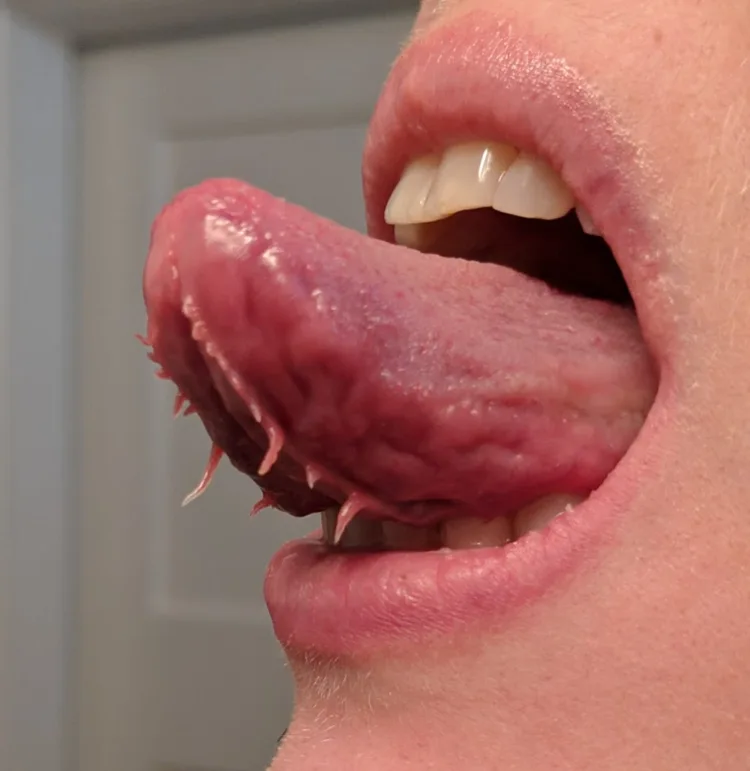Do Some People Really Have Tentacles Under Their Tongue?
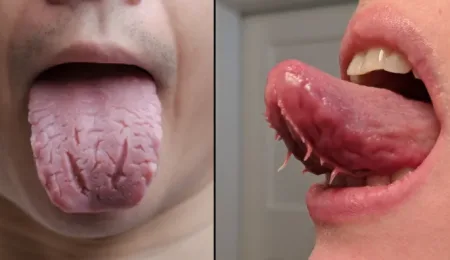
Some people have small skin-like tissues dangling from their tongues that look like tentacles. At first glance, the tongue may resemble something out of a cosmic horror story. However, these “creepy” tentacles are simply longer-than-usual fimbriated folds.
Tongue tentacles are simply leftover tissues that the body didn’t fully absorb.
If you roll your tongue upwards to inspect the underside, two key features stand out: the lingual frenulum (the thin band of tissue connecting the tongue to the floor of the mouth) and two veins running parallel on either side of it.
Look a little closer, and you’ll notice raised folds next to these veins. These are the fimbriated folds, also called plica fimbriata, which help drain saliva from two glands, the sublingual and submandibular glands, into your mouth.
In most people, these folds are barely noticeable. However, some individuals have a slight anomaly where the fimbriated folds are more prominent. These fringe-like bits can stick out, reaching up to 1 cm in length, and usually appear in pairs.
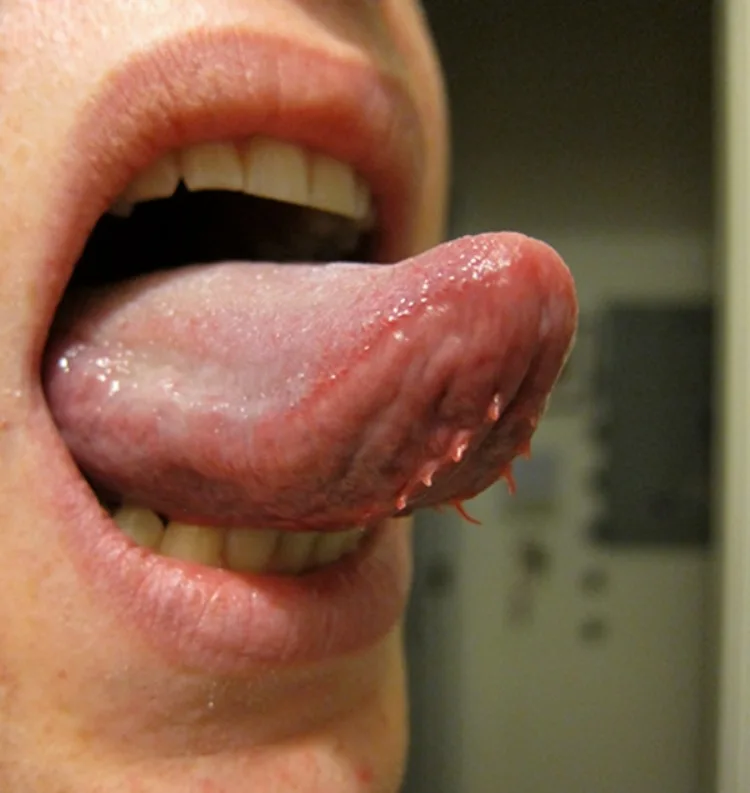
This physical anomaly isn’t caused by inherited genes or mutations. The fringes are simply leftovers from the tongue’s development stage. The body just didn’t absorb them all the way, so they’re still there.
While these “tentacles” may look wild, they are completely harmless. The only downside is that they can sometimes get caught between your teeth, which can be a bit annoying.
Around 1 to 2.5% of the population has a geographic tongue with red patches that shift in size and location.
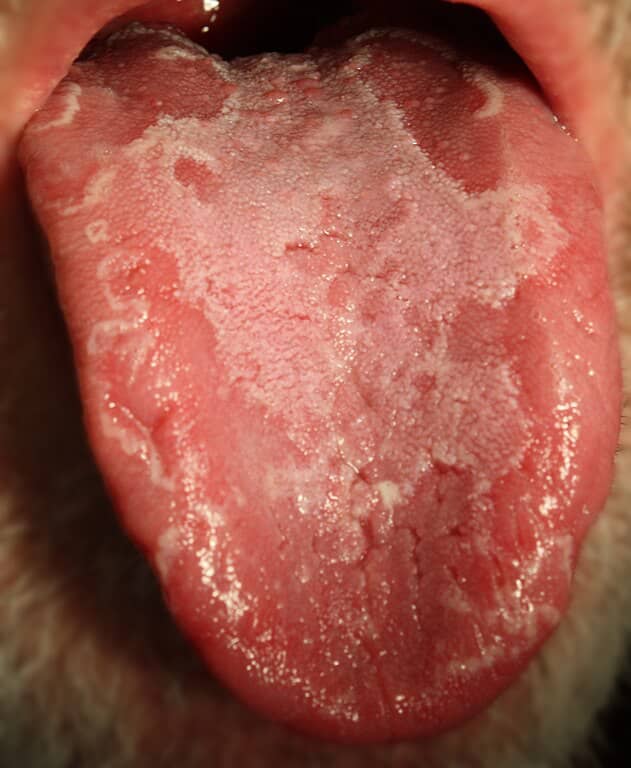
Another visually striking tongue condition is the “geographic tongue.†Here, the surface of the tongue has smooth, red patches caused by a loss of tiny bumps on the tongue called papillae, which normally cover its surface.
These patches are bordered by raised white lines. They can shift in shape and location over time, giving the appearance of a constantly changing map – hence the name.
While it may look concerning, having a geographic tongue is completely harmless. People with this condition often don’t experience any symptoms, though some may notice mild discomfort when eating spicy or acidic foods.
“Fissured tongue” affects 5% of the population and is characterized by grooves and cracks on the surface of the tongue.
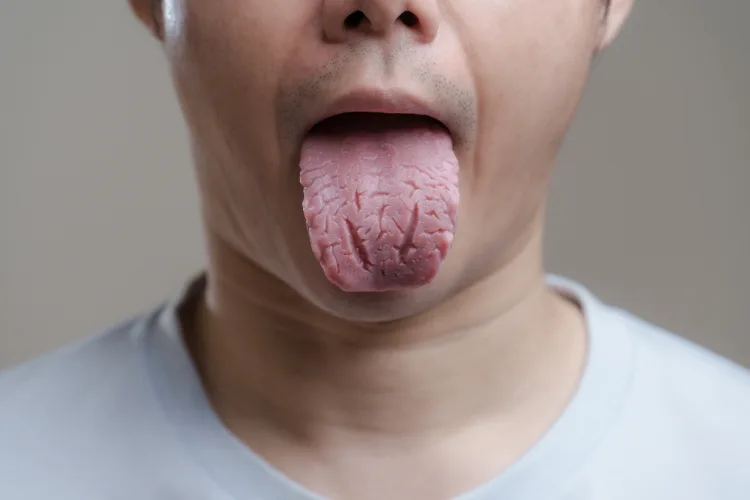
A fissured tongue has multiple deep grooves running along its surface. These grooves can vary in depth and size, and their pattern may appear as one fissure running down the middle with smaller fissures branching off. This makes the tongue appear cracked and scaly.
With an overall prevalence of 5%, the risk of developing a fissured tongue increases with age. It is likely caused by chronic trauma and vitamin deficiencies.
While the condition itself is harmless, food debris can accumulate in the grooves and cracks, causing irritation and pain.














